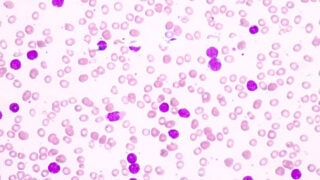Not a dry eye in the house: Treating a common, potentially dangerous eye ailment
Some 17 million adults in the U.S. have dry eye disease. Meet the physicians and researchers at the USC Roski Eye Institute’s Dry Eye Center who are fighting it.
https://www.youtube.com/watch?v=hWzqBnSdOSA
Transcript:
SARAH HAMM ALVAREZ, professor of ophthalmology, USC Roski Eye Institute: Dry eye syndrome is simply a defect in the functioning of the tear film that covers the surface of the eye.
ANNIE NGUYEN, assistant professor of clinical ophthalmology, USC Roski Eye Institute: It’s a chronic condition. The longer you have it, the more debilitating it can be, where you’re at risk for getting infections, ulcers and even irreversible blindness.
ALVAREZ: The USC Dry Eye Center of Excellence is a novel collaborative comprised of basic scientists who do research into the mechanisms and therapies and clinicians who specialize in the diagnosis and treatment in the clinic.
J. MARTIN HEUR, interim chair and professor of clinical ophthalmology, USC Roski Eye Institute: Our goal is to develop new ways to diagnose and treat dry eye disease with the mission of being able to bring new therapies to our patients so that we can personalize the treatments.
NGUYEN: Being in a large city like Los Angeles, we have the privilege of treating a diverse set of population of different dry eye patients. And with that, we’re able to build this rich bio-repository of tear samples.
HEUR: The tear bio-repository is one of our more important ongoing projects. We’re hoping to discover markers that can be used diagnostically or even therapeutically in our dry eye patient population, and that’s where the personalized medicine aspect becomes very important. What may work for one patient may not work for someone else who has a different cause of dry eye.
ALVAREZ: Our intent is to change the standard of diagnosis so that we can identify new factors that are key in determining which dry eye group patients belong in and which therapies they’re going to be best able to respond to.
HEUR: The prevalence of dry eye disease in the U.S. is estimated to be approximately 7%, which translates to about 17 million adults who have dry eye disease.
Even though patients with different causes of dry eye disease have the same symptoms, the underlying problems can be very different from patient to patient.
NGUYEN: As common as it is, we don’t know everything about it, and we’re learning about it every single day.
ALVAREZ: In truth, tears are a very complex biological mixture and they contain many factors that protect the surface of the eye from infection, that keep it lubricated and free from mechanical injury, and it’s not so easy to figure out what the particular defects are in the tear film and to go in and replace those selectively.
NGUYEN: Treatment for dry eye disease for some patients could restore their life function, their ability to perform activity of daily living and really improve that quality of life.
HEUR: I am very proud of what we’ve been able to accomplish thus far, but we still have a long ways to go.
NGUYEN: We have a team of passionate scientists and clinicians here. We have patients that are in need. We have a problem that needs to be solved and your donation will help contribute to this greater cause to really help cure this dry eye problem that we have.



